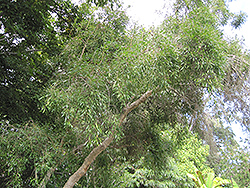It's all about ...
plants

Height: 30 feet
Spread: 18 feet
Sunlight:
![]()
![]()
Hardiness Zone: 9a
Description:
A small to medium tree that can be grown as a multi-stemmed or single specimen; rich green foliage releases lavender scent when crushed; a lovely and versitile landscape accent or border planting; drought tolerant once established
Ornamental Features
Lavender Tree features showy clusters of lightly-scented creamy white flowers at the ends of the branches in late winter. It has attractive green deciduous foliage. The glossy narrow leaves are highly ornamental and turn an outstanding red in the fall. It produces brown capsules from early to mid spring. The mottled gray bark adds an interesting dimension to the landscape.
Landscape Attributes
Lavender Tree is a multi-stemmed deciduous tree with an upright spreading habit of growth. Its average texture blends into the landscape, but can be balanced by one or two finer or coarser trees or shrubs for an effective composition.
This is a relatively low maintenance tree, and should only be pruned after flowering to avoid removing any of the current season's flowers. It is a good choice for attracting birds, bees and butterflies to your yard. It has no significant negative characteristics.
Lavender Tree is recommended for the following landscape applications;
- Accent
- Shade
- Hedges/Screening
Planting & Growing
Lavender Tree will grow to be about 30 feet tall at maturity, with a spread of 18 feet. It has a low canopy with a typical clearance of 4 feet from the ground, and is suitable for planting under power lines. It grows at a medium rate, and under ideal conditions can be expected to live for 50 years or more.
This tree does best in full sun to partial shade. It prefers to grow in average to moist conditions, and shouldn't be allowed to dry out. It is not particular as to soil type or pH. It is somewhat tolerant of urban pollution. This species is not originally from North America.
This plant is not reliably hardy in our region, and certain restrictions may apply; contact the store for more information.
